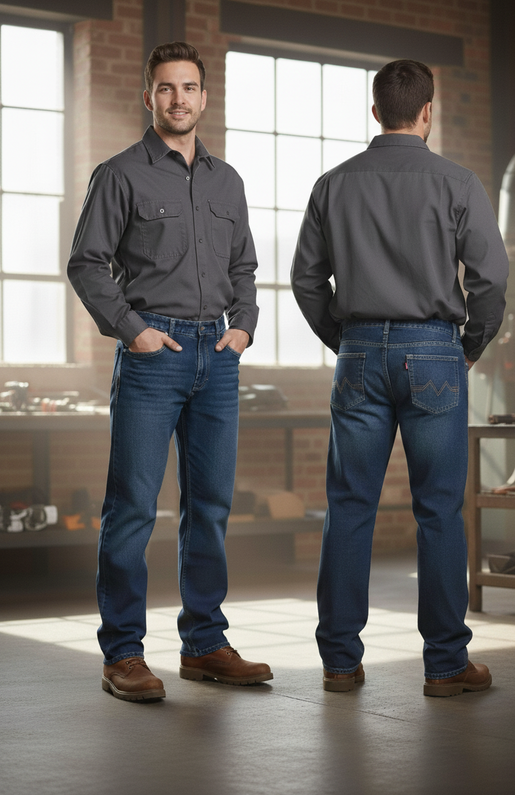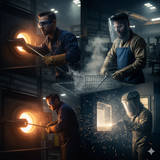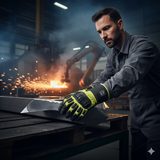Beyond Blue Jeans: Why FR Jeans are the Foundation of Your Daily Safety Protocol
For many workers in industries like oil and gas, utilities, electrical maintenance, and manufacturing, denim is a daily uniform. But when working near open flames, energized equipment, or combustible materials, standard cotton denim presents a dangerous risk: it can ignite easily and continue to burn, severely increasing the extent of burn injuries.
This is where FR (Flame-Resistant) Jeans step in.
FR jeans are more than just durable workwear; they are a critical, life-saving piece of Personal Protective Equipment (PPE). They are the foundation upon which your team’s entire body protection is built, safeguarding them against the sudden, intense thermal hazards of arc flashes and flash fires.
At Your Safety Company, we understand that PPE must integrate seamlessly into the workday. Here’s why FR jeans are non-negotiable for compliance, safety, and comfort.
The Dual Threat: Why FR is Essential
FR jeans are designed to protect against two primary thermal hazards, often meeting standards set by NFPA 2112 (for flash fires) and NFPA 70E (for electrical arc flash):
-
Flash Fires: Brief, high-intensity fires that occur rapidly when a fuel source (like a gas leak or solvent vapor) ignites. FR clothing is designed to self-extinguish almost immediately once the fire source is removed, drastically limiting the burn injury area.
-
Arc Flashes: An electrical explosion that produces extreme heat, pressure, and light. FR jeans provide a layer of insulation, measured by their ATPV (Arc Thermal Performance Value), which is rated in calories per square centimeter (cal/cm²). This rating indicates the maximum thermal energy the fabric can be exposed to without the wearer likely sustaining a second-degree burn.
The key difference between FR denim and standard denim is that FR fabrics will not continue to burn, melt, or drip onto the skin, preventing secondary, devastating injuries.
The Compliance Checklist: What Makes Quality FR Jeans
When selecting FR jeans for your team, look for these foundational characteristics:
-
Certification: Ensure the jeans are certified to relevant standards, primarily NFPA 2112 and often NFPA 70E. This guarantees they meet the minimum performance requirements.
-
ATPV Rating: The garment must have a cal/cm² rating that meets or exceeds the required PPE Category (CAT) or Hazard Risk Category (HRC) established by your workplace's arc flash hazard analysis.
-
Non-Synthetic Materials: The fabric should be natural fiber (like treated cotton) or a blend designed to ensure flame resistance. Never wear synthetic underlayers (like polyester leggings or athletic wear) beneath FR garments, as they can melt onto the skin in an incident, negating the FR protection.
-
Proper Fit: Jeans should be durable but comfortable and allow for a full range of movement, preventing workers from rolling up cuffs or unbuttoning them for relief, which compromises safety.
Comfort and Culture: The Key to Consistent Compliance
The best PPE is the PPE that is consistently worn. FR jeans have evolved significantly from the stiff, bulky garments of the past. Modern FR denim features:
-
Comfortable Weaves: Fabrics designed for softness and flexibility, making them suitable for long shifts.
-
Moisture-Wicking Technology: Some fabrics are designed to manage moisture, which is crucial for preventing heat stress, especially when wearing full FR coverage.
-
Modern Styling: Available in various cuts and fits, reducing the perceived difference between daily casual wear and required safety gear, boosting morale and compliance.
Care and Maintenance: Protecting the Protection
To ensure your FR jeans maintain their life-saving properties, proper care is essential:
-
Avoid Bleach: Chlorine bleach can break down the flame-resistant treatment of the fabric, potentially compromising the garment's protective capabilities.
-
Wash Separately: Wash FR garments separately from non-FR laundry to prevent contamination from non-FR residues (like grease, oil, or standard fabric softeners).
-
Check Condition: Regularly inspect jeans for tears, holes, or heavily contaminated areas. If the integrity of the fabric is compromised, the garment must be immediately removed from service.
Your Safety Company: Building Safety from the Ground Up
FR jeans are the foundation of arc and fire safety for millions of workers. They offer a comfortable, durable solution that meets the highest safety standards, giving your employees the confidence and protection they need every day.
Don't let your daily uniform become your greatest risk. Visit yoursafetycompany.com today to explore our selection of certified FR jeans and build your safety protocol from the ground up.
Recent Posts
-
More Than Goggles: The Specialized Eye Protection Needed for High-Heat Industrial Environments
In facilities that process metal at extreme temperatures, eye safety is a complex, multi-layered cha …12th Nov 2025 -
Double Defense: Why Cut and Impact Protection is Critical for Material Handling
In facilities that deal with heavy metal parts, sharp edges, and complex machining, a standard work …11th Nov 2025 -
Beyond the Flame: Why NFPA 2112 FR Apparel is Non-Negotiable
In high-risk industrial settings—from petrochemical plants and utilities to metal processing and hea …7th Nov 2025



